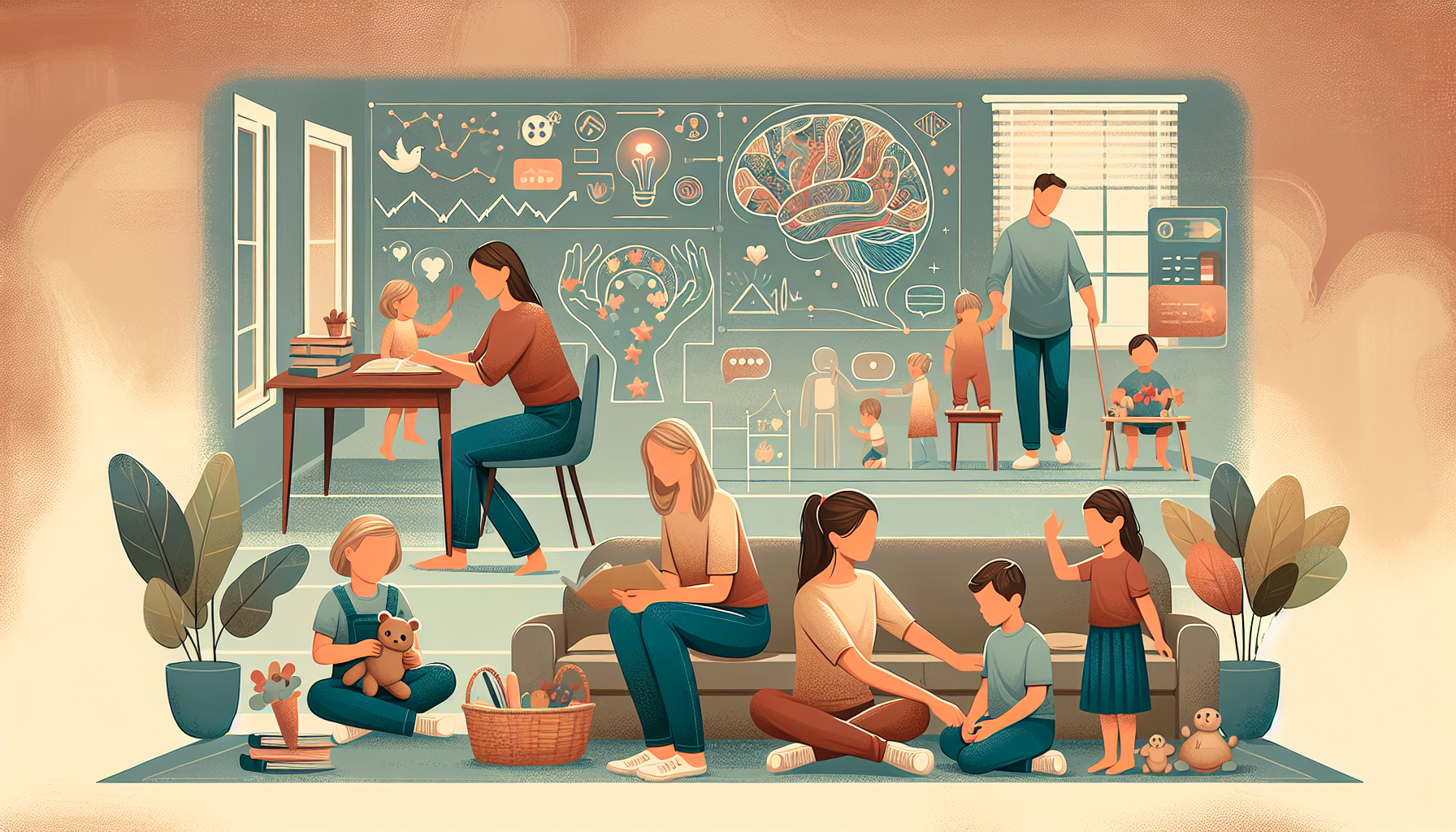“`html
Teaching Empathy to Young Children
As parents, one of the most important life skills we can nurture in our children is empathy. In a world filled with diverse perspectives and challenges, empathy helps kids understand others, build strong relationships, and develop kindness toward everyone they meet. Teaching empathy to kids isn’t just about raising compassionate individuals; it’s about equipping them with tools to navigate the complexities of human interaction. But how do you teach something as intangible as empathy? This article explores practical strategies, psychological insights, and actionable tips to help parents foster empathy in their children.
Why Is Empathy Important for Kids?
Empathy is the ability to recognize and understand the emotions and perspectives of others. For children, developing empathy early lays the foundation for healthier relationships, better communication skills, and strong emotional intelligence. Research shows that kids who practice empathy are more likely to excel socially and academically. They are also better equipped to handle conflicts, show kindness, and contribute positively to their communities.
In childhood, empathy supports the development of emotional resilience and self-awareness. It aligns with psychological principles such as the need for safety, autonomy, and self-expression. When children feel understood and valued, they are more likely to mirror these behaviors toward others.
The Science of Empathy
Empathy is rooted in brain development. The prefrontal cortex, responsible for decision-making and social interactions, continues to develop throughout childhood and adolescence. Mirror neurons, which activate when we observe others’ emotions or actions, also play a significant role in empathy. By creating a nurturing environment, parents can encourage these neural connections and help children internalize empathetic behavior.
How to Teach Empathy to Kids
Teaching empathy doesn’t require a rigid curriculum or technical expertise. Instead, it involves modeling compassionate behavior, engaging in meaningful conversations, and fostering emotional literacy. Below are some effective methods for teaching empathy to young children.
1. Model Empathy in Everyday Interactions
Children learn by observing their parents. If you want your child to show empathy, demonstrate it yourself. For example:
- Show kindness to others, whether it’s helping a neighbor or thanking a cashier.
- Express understanding when someone is upset, saying things like, “I see you’re feeling frustrated. How can I help?”
- Apologize when you’ve made a mistake, teaching humility and accountability.
2. Encourage Emotional Literacy
Before children can understand others’ feelings, they need to recognize and articulate their own. Emotional literacy is the ability to identify and express emotions accurately. To build this skill:
- Use emotional vocabulary during conversations. For example, “You seem excited about your new toy!” or “I noticed you’re feeling a bit sad today.”
- Read books or watch movies that explore emotions and discuss how the characters might be feeling.
- Play games like “Feelings Charades,” where children act out different emotions and guess what they are.
3. Teach Perspective-Taking
Perspective-taking is the ability to put yourself in someone else’s shoes. This skill helps kids understand others’ viewpoints and emotions. Here’s how you can encourage it:
- Ask open-ended questions like, “How do you think your friend felt when you shared your toy?”
- Help your child reflect on their actions by saying, “How would you feel if someone said that to you?”
- Encourage them to consider different perspectives in stories or real-life scenarios.
4. Promote Acts of Kindness
Kindness and empathy go hand in hand. Engaging in acts of kindness helps children practice empathy in action. Some ideas include:
- Encouraging your child to share toys or snacks with their friends.
- Volunteering as a family for a local charity or community project.
- Writing thank-you notes to teachers, family members, or friends.
5. Address Conflicts with Empathy
Conflicts are inevitable, but they can also be valuable teaching moments. When your child faces a disagreement, guide them through the process of resolving it empathetically:
- Ask them to explain their feelings and listen without interrupting.
- Encourage them to hear the other person’s perspective by asking, “What do you think they were feeling?”
- Help them brainstorm ways to resolve the conflict in a way that considers both parties’ feelings.
Practical Tips for Parents
Beyond the strategies mentioned above, here are some additional tips for fostering empathy in your child:
- Practice gratitude: Teach your child to appreciate what they have and express gratitude to others.
- Limit screen time: Excessive screen time can reduce face-to-face interactions, which are crucial for developing empathy.
- Encourage diverse friendships: Exposing children to people from different backgrounds helps them understand and appreciate diversity.
- Be patient: Learning empathy is a gradual process. Celebrate small steps and reinforce positive behaviors consistently.
Conclusion: The Lifelong Benefits of Empathy
Teaching empathy to young children is one of the most rewarding investments you can make as a parent. Empathy not only helps kids build stronger relationships and navigate social challenges but also fosters kindness and emotional intelligence that will serve them throughout their lives. By modeling empathy, encouraging emotional literacy, and promoting acts of kindness, parents can create a nurturing environment where empathy thrives.
Remember, raising empathetic kids doesn’t happen overnight, but every effort you make brings them closer to becoming compassionate and understanding individuals. Start today, and watch as your child grows into someone who truly cares for and understands others.
“`

